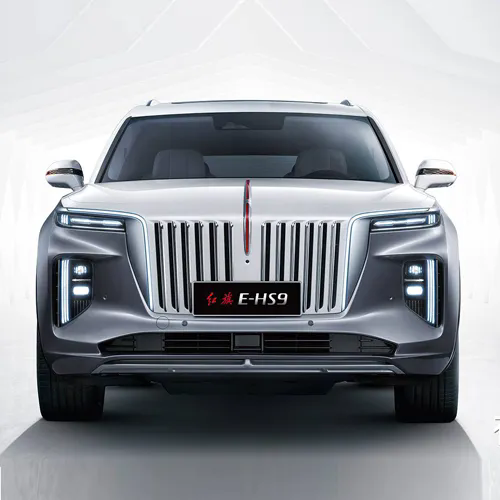What Are New Energy Vehicles and Why Are They the Future of Transportation?
2024-11-21
As the world shifts toward more sustainable and environmentally-friendly alternatives, New Energy Vehicles (NEVs) are emerging as a major player in the transportation industry. But what exactly are NEVs, and why are they considered the future of transportation? In this blog, we’ll explore what New Energy Vehicles are, the different types, and why they are gaining traction across the globe.
What Are New Energy Vehicles?
New Energy Vehicles, or NEVs, refer to vehicles that use alternative energy sources instead of traditional fossil fuels like gasoline or diesel. These vehicles are designed to reduce emissions, increase energy efficiency, and minimize the impact of transportation on the environment. NEVs typically rely on electricity, hydrogen, or hybrid systems to power the vehicle, and they come in various forms, from fully electric cars to plug-in hybrids and fuel cell vehicles.
Types of New Energy Vehicles
There are several types of New Energy Vehicles, each utilizing different forms of energy. These include:
1. Battery Electric Vehicles (BEVs)
BEVs are fully electric cars that rely entirely on batteries to power an electric motor. They do not have a gasoline engine and produce zero tailpipe emissions. BEVs must be recharged through electric outlets or charging stations. Examples include the Tesla Model 3, Nissan Leaf, and Chevrolet Bolt.
2. Plug-in Hybrid Electric Vehicles (PHEVs)
PHEVs combine an electric motor with a traditional internal combustion engine. They can run on electricity for short trips and switch to gasoline for longer trips, offering the flexibility of both worlds. This type of vehicle provides a good transition for consumers who may not be ready to fully embrace electric vehicles yet. Examples include the Toyota Prius Prime and Mitsubishi Outlander PHEV.
3. Hydrogen Fuel Cell Vehicles (FCVs)
FCVs use hydrogen as a fuel source, which combines with oxygen in the fuel cell to produce electricity, emitting only water vapor as a byproduct. While hydrogen-powered vehicles are less common, they offer an alternative to electric vehicles and are particularly appealing in regions where hydrogen infrastructure is being developed. Examples include the Toyota Mirai and Hyundai Nexo.
4. Hybrid Electric Vehicles (HEVs)
HEVs combine an internal combustion engine with an electric motor, but unlike PHEVs, they cannot be plugged in to recharge the battery. Instead, the battery is charged through regenerative braking and the engine itself. HEVs are popular for their fuel efficiency and reduced emissions compared to conventional vehicles. The Toyota Prius is one of the most well-known examples of an HEV.
Why Are New Energy Vehicles Important for the Future of Transportation?
1. Environmental Benefits
One of the most significant reasons why New Energy Vehicles are gaining popularity is their positive impact on the environment. Traditional vehicles powered by gasoline and diesel are major contributors to air pollution and greenhouse gas emissions. By reducing or eliminating the use of fossil fuels, NEVs help lower carbon emissions, improve air quality, and reduce our overall carbon footprint.
2. Energy Efficiency
New Energy Vehicles are typically more energy-efficient than their internal combustion engine counterparts. Electric motors, for example, can convert over 85% of electrical energy into movement, compared to the mere 20-30% efficiency of a traditional gasoline engine. This efficiency helps reduce the overall demand for energy and provides a more sustainable method of transportation.
3. Reduction of Dependence on Fossil Fuels
NEVs reduce the reliance on non-renewable resources, such as oil and natural gas. As the world’s energy needs grow, decreasing our dependence on fossil fuels is critical for long-term sustainability. With NEVs, we can shift toward cleaner energy sources like wind, solar, and hydroelectric power to fuel our vehicles.
4. Cost Savings
Although the initial purchase price of NEVs can be higher than conventional vehicles, the long-term cost savings are significant. Electricity (or hydrogen) is generally cheaper than gasoline, and maintenance costs are often lower for electric vehicles, as they have fewer moving parts. Additionally, governments around the world offer incentives, rebates, and tax breaks to encourage the adoption of NEVs, making them even more affordable.
5. Technological Innovation
The rise of NEVs is driving significant advancements in technology, from battery technology to renewable energy sources and vehicle infrastructure. Innovations in fast-charging technology, energy storage, and autonomous driving systems are all being accelerated as part of the push for cleaner transportation. This technological progress can also lead to new job opportunities and economic growth in the green energy sector.
Challenges Facing New Energy Vehicles
While New Energy Vehicles offer numerous benefits, there are also challenges to their widespread adoption:
1. Limited Charging Infrastructure
Although the network of charging stations is growing, it is still far behind the infrastructure needed to support the mass adoption of electric vehicles. Consumers are often hesitant to switch to electric vehicles due to concerns about the availability and convenience of charging points, especially in rural or less-developed areas.
2. Battery Range and Charging Time
While the range of electric vehicles has improved over the years, it remains a concern for some drivers, particularly those who frequently take long trips. Additionally, charging times can be lengthy, with some vehicles taking several hours to fully recharge. Fast-charging technology is being developed to address this issue, but it is not yet available on all models.
3. High Initial Costs
The upfront cost of purchasing a New Energy Vehicle can still be higher than traditional vehicles, primarily due to the cost of the battery. Although prices are gradually decreasing as technology improves and production scales up, many consumers are still deterred by the initial investment required.
4. Battery Disposal and Recycling
As the number of electric vehicles grows, so too does the need for battery disposal and recycling solutions. Batteries used in electric vehicles contain materials that can be harmful to the environment if not properly disposed of. While recycling technology is advancing, the infrastructure for safe disposal and reuse of EV batteries needs further development.
Conclusion: Are New Energy Vehicles the Future of Transportation?
Despite the challenges, New Energy Vehicles are undeniably paving the way for a more sustainable future in transportation. With their environmental benefits, energy efficiency, and potential for reducing our dependence on fossil fuels, NEVs offer a promising solution to the world’s transportation problems. As technology continues to evolve, and with governments and industries investing heavily in cleaner alternatives, NEVs will likely play a central role in the future of transportation.
The shift towards New Energy Vehicles is not just a trend but a necessary step toward ensuring a cleaner, healthier planet for future generations. Whether through fully electric cars, hybrids, or hydrogen fuel cells, the future of transportation is undeniably green.



